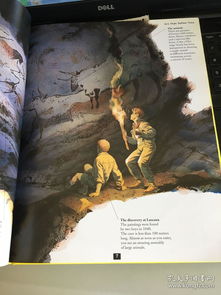Content:
Introduction: Wild fishing, with its serene environment and the thrill of the catch, has become a popular pastime for anglers around the world. Whether you are a seasoned fisherman or a beginner looking to get started, understanding the methods and techniques of wild fishing can significantly enhance your experience and increase your chances of success. In this article, we will delve into the essential methods and techniques for wild fishing, ensuring that you are well-equipped to tackle any fishing spot.
Choosing the Right Location: The first step in successful wild fishing is selecting the right location. Research the area you plan to fish, considering factors such as water flow, depth, and vegetation. Look for areas where fish are likely to congregate, such as around rocks, logs, or weed beds. Additionally, consider the time of day and season, as fish behavior can vary significantly.
Understanding Fish Behavior: To effectively fish in the wild, it is crucial to understand the behavior of the fish you are targeting. Different species have varying preferences for food, habitat, and temperature. Study the habits of your target fish, and adjust your approach accordingly. For example, some fish are more active during dawn and dusk, while others may be more aggressive during midday.
Choosing the Right Equipment: The equipment you use can make a significant difference in your fishing success. Here are some essential items to consider:
a. Rod and Reel: Select a rod and reel that match the type of fish you are targeting. Lightweight spinning rods are suitable for most freshwater species, while heavier rods are better for larger fish or saltwater fishing.
b. Line: Use a line that matches the size and strength of the fish you are targeting. Monofilament, fluorocarbon, and braided lines each have their advantages, so choose the one that suits your needs.
c. Lures and Baits: Match your lure or bait to the fish's natural prey. Live bait, artificial lures, and natural baits like worms or insects can all be effective, depending on the species.
Presenting Your Bait or Lure: The way you present your bait or lure can greatly impact your success. Here are some techniques to consider:
a. Casting: Practice your casting technique to ensure you can accurately place your bait or lure in the desired location. Avoid casting too hard, as this can spook fish.
b. Trolling: Trolling involves slowly moving your boat or walking along the shore with your line out, allowing your lure to swim through the water. Adjust your speed and depth to match the fish's preferences.

c. Still Fishing: For some species, still fishing can be more effective. This involves casting your bait or lure and letting it sit motionless in the water, waiting for a bite.
Reading the Water: Being able to read the water is a crucial skill for wild fishing. Look for signs of fish activity, such as splashes, bubbles, or surface disturbances. Pay attention to the water's color, clarity, and flow, as these can indicate the presence of fish.
Patience and Persistence: Wild fishing often requires patience and persistence. Fish may not bite immediately, so be prepared to wait. Stay focused and keep experimenting with different techniques until you find what works.
Conclusion: Mastering the art of wild fishing involves a combination of knowledge, skill, and practice. By selecting the right location, understanding fish behavior, choosing the appropriate equipment, and employing effective techniques, you can increase your chances of success. Remember to always respect the environment and practice ethical fishing. With time and experience, you will become a proficient angler, enjoying the beauty and rewards of wild fishing.












